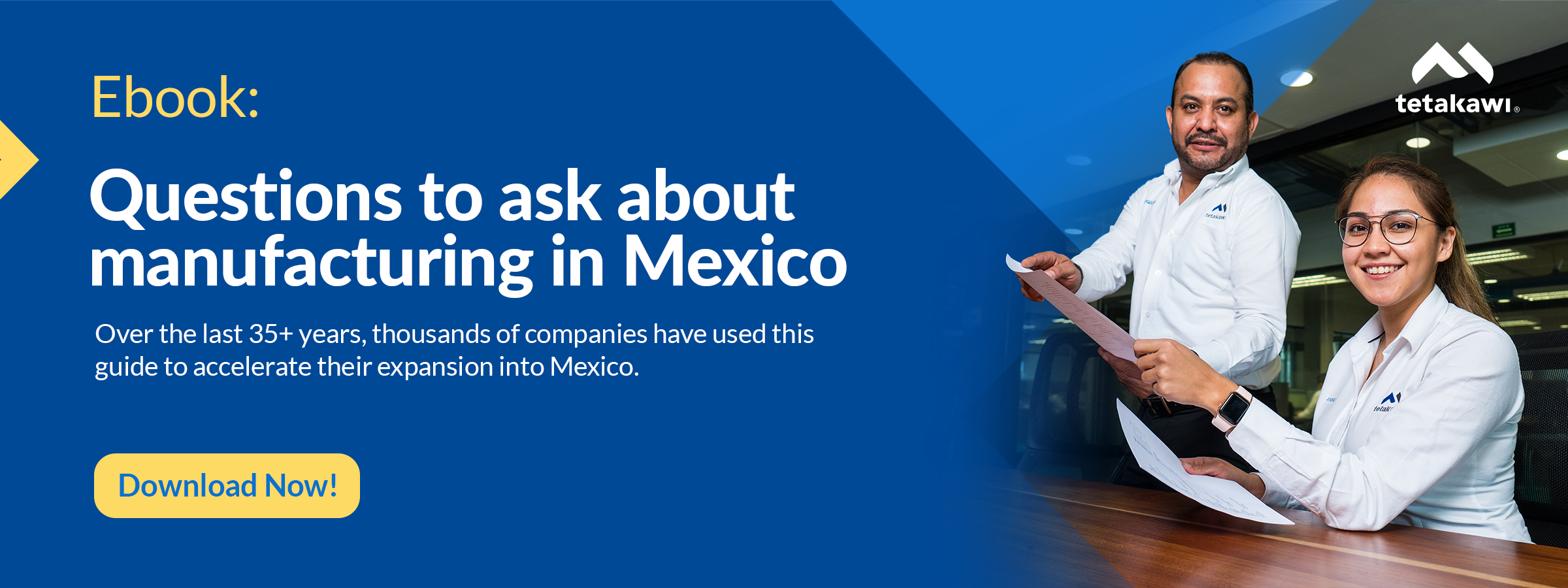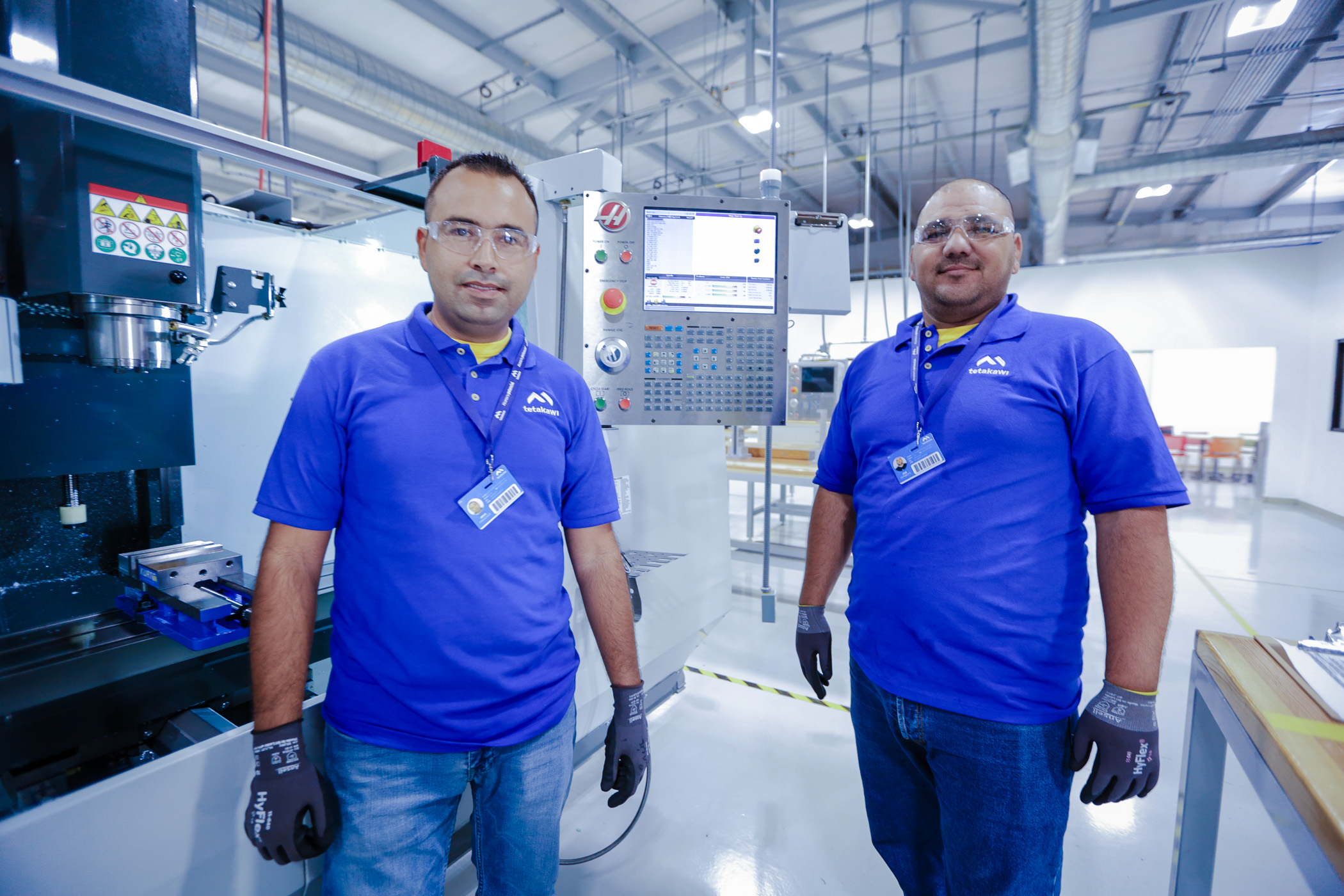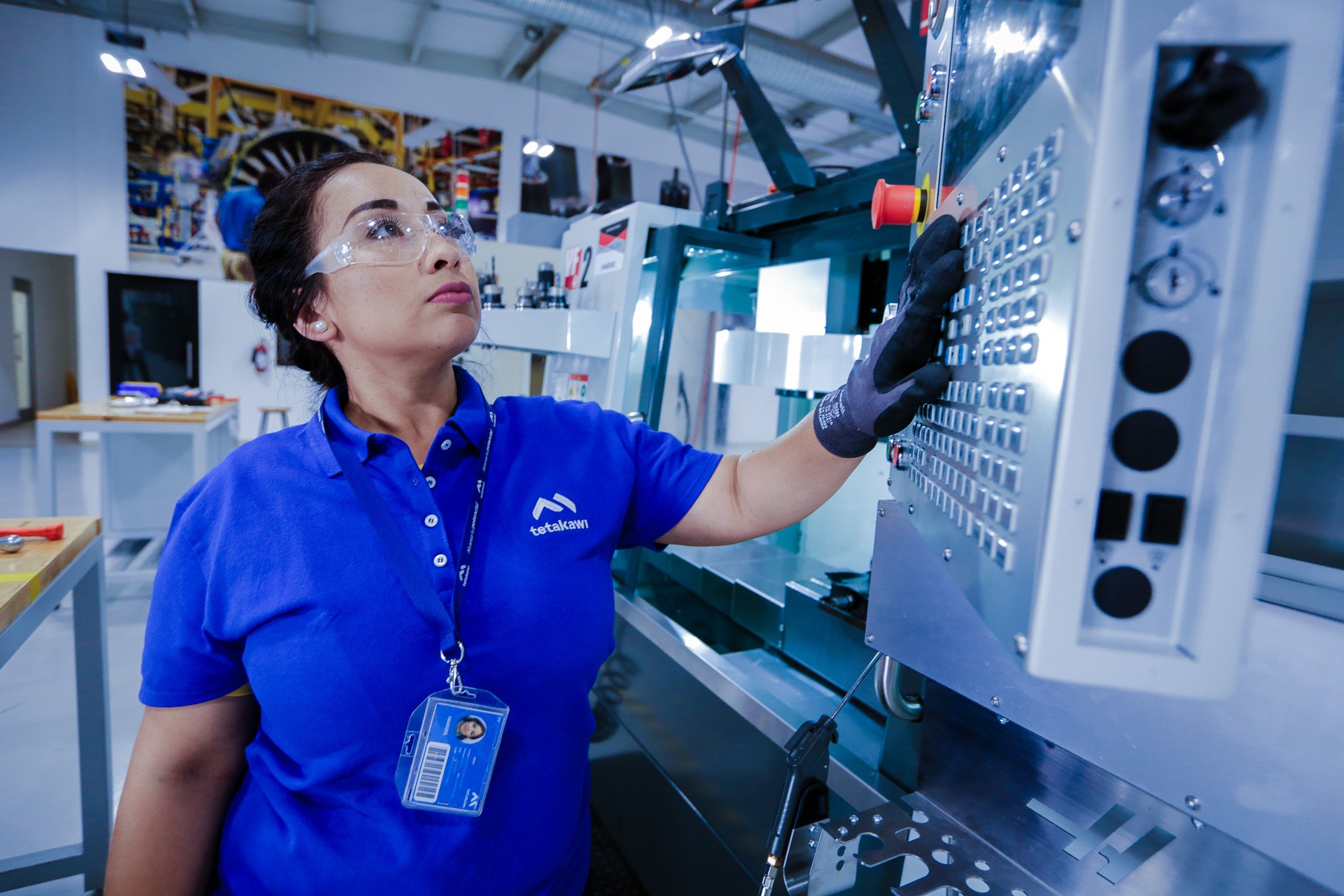New efforts to return manufacturing to the United States are hitting an old problem: lack of domestic manufacturing labor.
Employers are evaluating a range of solutions but recognize that developing a stable workforce pipeline takes time. In the short term, manufacturers may find that a multi-pronged approach is the most effective strategy to de-risk their supply chain. For many manufacturers, this approach involves nearshoring production in Mexico to support long-term U.S. investments.
There’s big demand to reshore manufacturing
The call to bring manufacturing back to the United States is not new, but it has recently been reinvigorated by significant federal investment in the U.S. manufacturing sector. The U.S. government has set aside funds for semiconductor and cleantech manufacturing through the Infrastructure Investment and Jobs Act, CHIPS Act, and Inflation Reduction Act. The government has called this investment a matter of national security, as the country has proven vulnerable to critical material shortages as a result of global supply chain disruptions.
Clean Economy Works reports that the IRA alone has led to a $105 billion investment in clean energy manufacturing facilities to date. The more than 230 announced projects are expected to create more than 93,000 job opportunities. Therein lies the challenge with the call for U.S.-based manufacturing.
There’s a limited U.S. labor pipeline to fill manufacturing jobs
Labor shortages have been the leading factor challenging U.S. manufacturers for years. More than 71% of manufacturers surveyed by the National Association of Manufacturers cited their inability to attract and retain employees as their top challenge as of 2023 Q3. As of December 2023, Bureau of Labor Statistics data showed 601,000 open manufacturing jobs, a three-month high.
The Semiconductor Industry Association has cautioned that the forthcoming factory-building boom could exacerbate the current manufacturing labor shortage. It projects that more than half of the approximately 114,800 new computer science, engineering, and technician jobs expected to be created by the end of the decade could remain unfilled.
The industry has explored numerous reasons why manufacturing labor demands continue to go unmet. Older workers are retiring in larger numbers, and fewer young workers see manufacturing as a desirable career path. As Carolyn Lee, president of the Manufacturing Institute, told CNBC, this may be partly the result of a misperception about modern manufacturing.
In addition, the shift toward automation means that today’s manufacturing jobs increasingly demand sophisticated skill sets. Without a young workforce pipeline eager to pursue training in these skill sets, the suitable labor pool continues to decrease.
Manufacturing’s labor shortage needs new solutions
With new demands to bring manufacturing closer to U.S. shores, companies are evaluating new solutions to their recruitment and retention challenges. For example:
- Higher compensation and more benefits. A 2022 study from The Manufacturing Institute found that 90% of surveyed manufacturers had increased wages, salaries, and benefits several times over the previous year or two in order to remain competitive.
- Flexible scheduling. The Manufacturing Institute has also pointed to a trend toward more flexible scheduling, citing workers’ prioritization of flexibility over wages. However, the organization’s research acknowledges the sector’s unique challenges in adjusting nontraditional schedules.
- Community college and high school partnerships. Despite the push for more specialized skill sets in manufacturing, employers recognize these skills don’t necessarily have to be acquired in college. Building awareness of manufacturing as a career choice among high school students can help build a future pipeline of students who pursue certificates or skill-based training. Some companies are leaning into partnerships with local K-12 schools and community colleges to offer these programs. However, this long-term investment does little to alleviate the need for employees today.
The potential drawbacks to each of these solutions – including skyrocketing costs and the lack of immediate support – should give manufacturers pause. This pause may be a good time to reexamine the value you expect to get from reshoring manufacturing and determine if there may be an outside-the-box alternative to help get the desired results.
Mexico’s labor provides immediate relief
Companies that want to “reshore” manufacturing back to the U.S. due to a desire to de-risk their supply chains may find they can gain this benefit – and more – by “nearshoring” manufacturing in Mexico. Mexico’s proximity to the U.S., in combination with labor availability and cost-effectiveness, has long made it a center for manufacturing investment. However, U.S.-based manufacturers may not recognize that their factories in Mexico can allow them to reinvest in their U.S. employees.
As Business Insider (BI) points out, with most Americans uninterested or ill-equipped for manufacturing jobs, Mexico provides an immediate labor solution. The country’s long history in manufacturing has led to the development of robust training infrastructure in a number of regions. In addition, investment in up-and-coming manufacturing centers, based on time-proven formulas, is helping create new long-term workforce pipelines in locations like Mazatlán.
As Luis Torres, a senior business economist at the Federal Reserve Bank of Dallas, commented to BI, many businesses find it beneficial to make supply chain investments in both the United States and Mexico. "Mexican manufacturing is a complement of U.S. manufacturing," he told BI. "It's not that they're competing."
Indeed, many companies find that by moving certain manufacturing processes to Mexico, they’re able to find the skill sets they need at a reasonable cost. Lower labor costs can help manufacturers reduce the costs they pass on to U.S. consumers and reinvest in U.S. operations. Moreover, manufacturing plants in the U.S. often source components from Mexico, and vice versa. U.S. and Mexican factories both benefit from this production sharing.
Adopt a multi-pronged solution to labor shortages
Manufacturers looking to Mexico as an immediate solution to their labor challenges should still consider the long-term implications of such a move. Labor conditions vary across Mexico, with greater workforce competition in the northern border region than in some more central locations. In evaluating site options, consider:
- Does the site have a history of population growth? Is that population projected to continue growing?
- What is the median age of the local workforce?
- Are educational institutions nearby providing the training I need, or who may be willing to support my company with tailored training?
- What are the local expectations for compensation and benefits?
When it comes to this last point, it is important to know that it can be difficult to access this data in some regions. However, by working with a shelter service provider, companies can gain nuanced insight into local expectations and effective recruitment strategies.
FAQ: How to Evaluate Workforce Potential for Manufacturing in Mexico?
Maximizing workforce potential is key to ensuring successful manufacturing operations in Mexico. To evaluate the present and future availability of labor effectively, consider these strategic steps:
-
Understand the Regional Workforce Profile: Begin by assessing the demographic and educational profile of the region's workforce. This includes understanding the median age, education levels, and the types of industries that currently thrive in the area.
-
Review Workforce Data and Trends: Examine labor market statistics to gauge the availability of skilled workers. This should include current unemployment rates, workforce participation rates, and trends in local education fields that align with your needs.
-
Evaluate Local Education and Training Infrastructure: Identify if there are local technical schools, universities, or training programs that could supply skilled workers. Look into existing partnerships between industry and education institutions that could benefit your operations.
-
Assess Incentives for Workforce Development: Determine if there are government or regional incentives for workforce training that could enhance the skill set of potential employees. This might include tax breaks or grants for companies that invest in local workforce development.
-
Analyze Wage and Benefit Expectations: Research the prevailing wages and benefits in the region to ensure competitive offers can be made. This includes understanding cost-of-living variations within different areas of Mexico.
-
Consider Cultural Fit and Adaptability: Reflect on the cultural aspects of the workforce, such as language abilities, work ethic, and adaptability to new manufacturing technologies or processes.
-
Examine Labor Mobility and Stability: Look into factors affecting labor stability, such as population growth, migration patterns, and the historical turnover rates in the local manufacturing sector.
-
Engage with Local Manufacturing Networks: Connect with local manufacturers and industry groups for firsthand insights into workforce reliability, challenges, and best practices.
-
Utilize Shelter Service Providers: Consider partnering with shelter service providers who have extensive experience in the local labor market to guide you through setting up your operations efficiently.
-
Plan for Long-term Workforce Development: Strategize on developing a sustainable workforce by investing in community engagement, continuous education, and creating clear career paths to retain talent.
By following these steps, manufacturers can form a comprehensive understanding of the workforce in Mexico and make informed decisions about establishing or expanding their manufacturing presence in the region.
Ready to explore Mexico?
Tetakawi has more than three decades of experience helping manufacturers navigate recruitment, retention, payroll administration, and other labor issues in Mexico. We also help companies reap the advantages of the IMMEX program that incentivizes close cooperation across the U.S.-Mexico border.
To learn more about how we can help you develop a stable manufacturing workforce pipeline, contact us today.
Subscribe
Sign up and stay informed with tips, updates, and best practices for manufacturing in Mexico.






